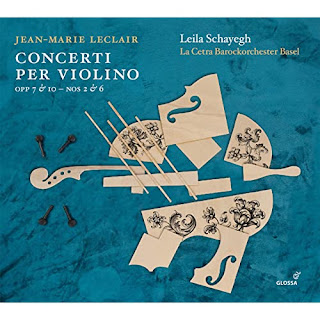Wilhelm Kempff: Bach, Mozart, Schubert & Schumann
This welcome historic release from APR Recordings includes Wilhelm Kempff's complete recordings for Polydor of music by Bach, Mozart, Schubert and Schumann, made in the period 1927 to 1936. We have here nearly 75 minutes of music, which together make for an appealing recital.
Indeed, though I know Kempff primarily through his recordings of Beethoven's Piano Sonatas, I would find almost anything the great pianist plays to be appealing. But there's something special about these recordings, something quite miraculous. In spite of the relatively primitive technology involved in these early electrical recordings, I had no trouble at all forgetting sonic imperfections, and zeroing in on a great master channeling great composers. The French Suite no. 5 of Bach, recorded in 1935, is the highlight of the disc; it's a masterful interpretation. I was in awe of this from the first time I heard it, since I had the strong feeling that Kempff was communicating his own awe, as he so often does with Beethoven, before a great masterwork.
I was quite surprised by Kempff's interpretation of Mozart's Piano Sonata in A major, K. 331, recorded in 1935. It seems much more modern than I would have expected, with crisp, carefully delineated lines, and no hint of the romanticizing prettiness that plagued Mozart music of the period. While not completely Historically Informed, this performance once again demonstrates a real, personal connection between pianist and composer.
There are a number of Kempff transcriptions here, including some Bach pieces that have entered the repertoire of many pianists, and a very clever reworking of Liszt's version of Schubert's "Hark, Hark, the Lark!". The disc ends with a beautiful dream: Schumann's Träumerie, recorded in 1936.
I've characterized the piano playing of Wilhelm Kempff as a miracle, but there's another, albeit smaller, miracle involved in this release. It's quite amazing that one can listen to all of this music with little acoustic worries. That's a testament to the state-of-the-art German engineering behind the recordings themselves, but also, of course to work since then by the Producer and Audio Restoration Engineer for this project, Mark Obert-Thorn. The many years between recording and listening seem simply to vanish.
Stephen Siek's liner essay is first-rate, mixing in technical details, but making sure that storytelling prevails. Learning about Kempff's 1934 trip to Buenos Aires on the Graf Zeppelin adds a great deal to the charm of the entire project.
This disc will be released March 4, 2022.








